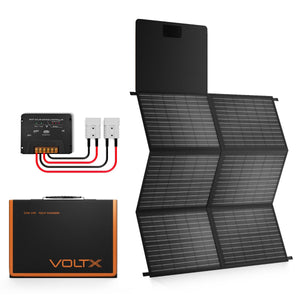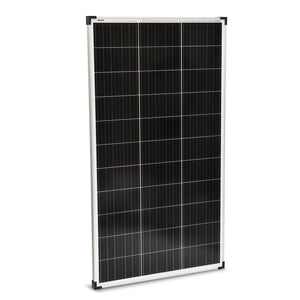While camping does mean an opportunity to commune with nature, this does not mean you have to leave the comforts of modern city living behind. After all, it is always nice to sit down with a cold beer in hand and just enjoy your surroundings. And how do you keep your beers old while you are out camping? Why use a portable camping fridge, of course. And how do you power said camping fridge? With a camping solar panel.
What equipment do you need to camp with solar power?
- A self-sufficient solar setup may include:
- Camping solar panels
- Solar regulator
- Anderson to Anderson plug lead
- Alligator clips to Anderson plug
- Deep cycle battery
The way that these work together is simple: the solar panel absorbs power from the sun, which then flows into the connected deep cycle battery via the solar regulator, putting charge back into the battery. Also known as solar charge controllers, solar regulators are essential because they regulate the flow of power preventing damage to your battery from fluctuating charge or overcharging.
What size Battery do I need?
A popular choice with campers is a 120Ah deep cycle 12v battery. Most battery manufacturers recommend that a battery is not discharged more than 50% capacity to ensure the life of the battery. That means that you have 60Ah per day of usable battery life. If we go back to the example of an 80L fridge with some LED strip lights using approx 58.5Ah per day, it 's easy to see why you need a reliable solar set up to ensure that the charge is being returned back to your battery.
Please note that you must consider your battery 's requirement to maintain a certain level of charge (above 50% is optimal) to avoid any damage. Lithium-Iron Phosphate (lifepo4) batteries, however, can be drained to 20% without any damage - and charge much quicker - the reason why they have a much heftier price tag. The Lithium Iron (LiFePO4) battery also has approximately 5000 charge cycles, compared to the 120Ah lead acid battery with only approx. 1000 charge cycle life. Additionally, the Lithium Iron is almost half the weight of the lead acid.
How do I calculate solar power requirements?
You really want to have a basic understanding of how much power your equipment is using, that way you will ensure you purchase the correct battery, solar regulator and solar panel for your usage. If any of these products are the wrong size and too small for your requirements you could end up with an unexpected flat battery, or worst case scenario, a damaged battery or solar regulator.
To calculate your usage most devices are labelled with their power draw; from there you need to estimate how long per day you will use the device to work out your overall power consumption.
What should you try not to power with solar?
Avoid using any major heating appliances like hair dryers from your power inverter. While devices such as power inverters and air compressors can draw a lot of power, usually they are only operated for small amounts of time, but they are energy-intensive and will quickly deplete your battery's power. If you do utilise these devices, make sure you are monitoring your solar regulator to ensure you will not leave yourself with a flat battery.
What types of solar regulators are there?
In nearly all portable solar power systems that utilise batteries, a solar charge controller is required. The task of a solar charge controller is to regulate the power generated from the solar panels going to the batteries and keep the batteries charged without overcharging. If you were to overcharge your battery, it will at the very least significantly reduce the batteries life, and worst case scenario, damage the battery to the point that they are unusable.
Frequently Asked Questions
- What equipment do you need to camp with solar power?
- What size Battery do I need?
- How do I calculate solar power requirements?
- What should you try not to power with solar?
- What types of solar regulators are there?




